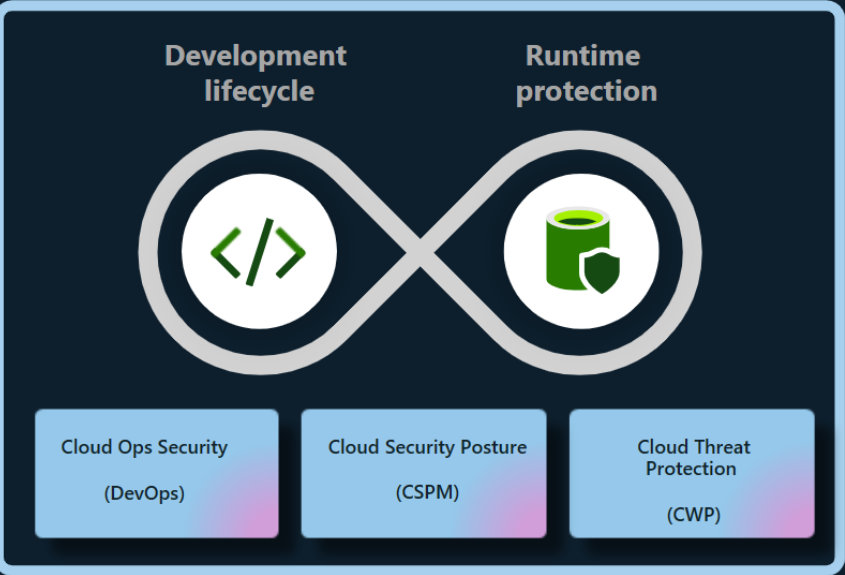Microsoft’s Next Leap in AI-First Security
At Microsoft Build 2025 and subsequent Azure updates, one theme emerged clearly — AI is transforming security, but security must now protect AI itself.
To meet this new reality, Microsoft announced AI Security Posture Management (AI-SPM) within Defender for Cloud — a unified framework to help organizations discover, assess, and secure every AI system in their environment.
From Azure AI Foundry to Copilot Studio, enterprises are building faster than ever. But with innovation comes risk — model sprawl, data exposure, and compliance uncertainty.
AI-SPM is Microsoft’s answer: a living, cloud-native control plane for AI risk governance.
“As models become enterprise assets, securing them isn’t optional — it’s existential.”
— Gaurav Agarwaal
Understanding AI SPM: Visibility for the Age of Intelligence
AI SPM, now in public preview, extends Defender for Cloud’s posture-management architecture into the AI domain. It provides continuous visibility into how AI services, models, and datasets are configured — and where they may be exposed.
At its foundation, AI SPM automatically discovers:
- AI resources — including Azure AI Services, model catalogs, and connected endpoints.
- AI assets — the models, datasets, and pipelines deployed across cloud and hybrid environments.
- AI workspaces — grouped under a centralized inventory for unified management.
Once discovered, Defender for Cloud evaluates each AI asset’s security posture — applying the same analytic depth that CSPM brings to cloud infrastructure.
Admins can see misconfigurations, detect over-permissive access, and receive actionable recommendations to harden model environments.
My Pick of Top Capabilities: The Building Blocks of AI SPM
1. AI Inventory & Bill of Materials (AI-BOM)
AI SPM automatically generates a bill of materials for every AI workload — listing associated datasets, endpoints, storage accounts, and network dependencies.
This visibility gives defenders a precise map of what each model touches and how data flows.
Technical deep dive: All AI resources onboarded to Defender for Cloud appear in the unified inventory blade, with tags linking them to Azure Policy and role assignments.
2. Security Recommendations & Attack-Path Analysis
AI SPM correlates misconfigurations across compute, storage, and networking — producing AI-specific recommendations.
For example, models running with public endpoints or unencrypted data connections are automatically flagged.
Technical deep dive: These findings feed into Defender for Cloud’s graph-based attack-path engine, which visualizes how an attacker could move from an exposed AI endpoint to sensitive data assets.
3. Continuous Posture Monitoring for Models & Data
AI SPM continuously scans for changes in model configuration, dependency versions, and role assignments.
It captures policy drift and integrates with Microsoft Entra ID for identity analytics.
Technical deep dive: Signals are processed through Defender’s analytics pipeline and surfaced in the AI security posture dashboard, refreshed automatically without manual scans.
Unified Theme: From Reactive Defense to Proactive AI Trust
Traditional posture management focused on infrastructure. AI SPM shifts that focus to intelligent workloads — where data, models, and algorithms converge.
The service helps security and compliance teams:
- Discover all AI assets across Azure subscriptions.
- Assess configuration risk through continuous posture scoring.
- Remediate issues with built-in policy enforcement.
- Report compliance readiness for frameworks like ISO 42001 and the EU AI Act.
“The organizations that will lead in AI aren’t those that deploy fastest, but those that deploy safely.”
— Gaurav Agarwaal
Product Roadmap: Defender for Cloud’s Expanding AI Layer
Microsoft outlined the following roadmap directions for AI SPM:
- Expanded model discovery across Azure AI Foundry and third-party AI services.
- Deeper integration with Data Security Posture Management (DSPM) to trace data lineage and sensitivity labels.
- Cross-tenant analytics for multi-cloud AI visibility.
- Enhanced compliance dashboards aligned with AI-governance standards.
What CXOs Should Do Next (Prescriptive)
- Establish AI Asset Inventory — use Defender for Cloud’s AI SPM to map every model, dataset, and service in production.
- Apply Conditional Access & Private Endpoints — enforce least-privilege design across AI resources.
- Integrate with Purview DSPM — unify model posture with data sensitivity insights.
- Adopt Continuous Monitoring — treat model drift and configuration change as posture signals, not one-time audits.
- Report AI Readiness — include AI SPM posture scores in enterprise risk dashboards.
Final Reflection: Security as the Foundation of Responsible AI
AI SPM isn’t just another security feature — it’s the blueprint for a new era of model governance.
By merging posture management, data protection, and compliance into a single motion, Microsoft has turned AI security into an operational practice rather than a reaction.
“In responsible AI, posture is everything — because visibility is the first form of protection.”
— Gaurav Agarwaal
Views: 3.8K

